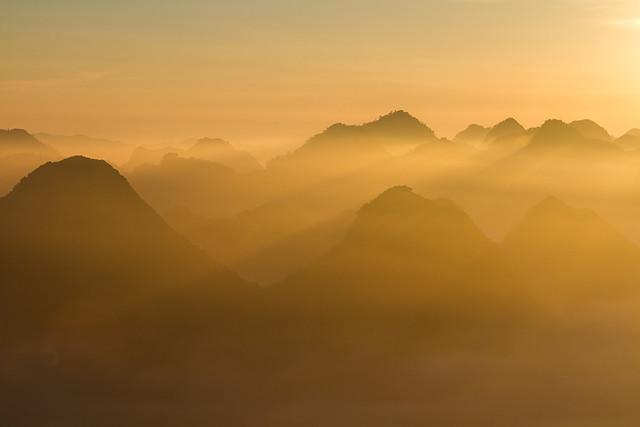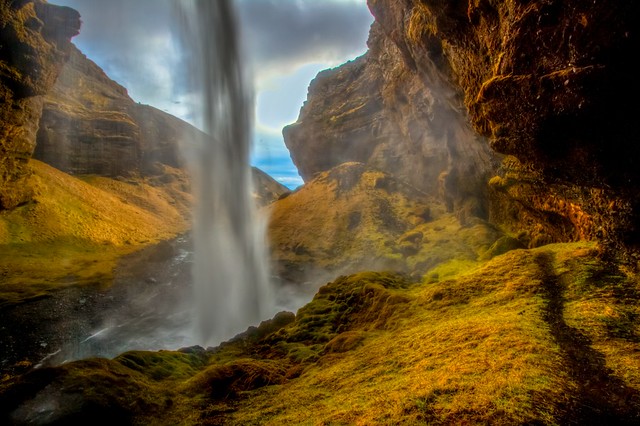Landscapes are some of the most beautiful and inspiring images we can create. To convey the beauty of a location requires that you get into a certain mindset, one that is not easy to achieve.
You cannot arrive on location and just take a stunning picture, it requires dedication, planning and perseverance. Even then, other elements might conspire to ruin your perfectly planned image.
Becoming a capable landscape photographer takes a long time and a lot of effort.
If you read Lightstalking regularly you will already have a great eye for composition, but a landscape photographer needs so much more than that. Today we are going to help you on the way with some tips on developing a landscape photographer’s mindset.

Be Motivated
Motivation is possibly the biggest asset of the landscape photographer. Most of us here have a good eye for a shot, but how many will get up hours before dawn on a freezing cold morning and drag ourselves to a windswept location?
You might spend hours in the wilderness with little to eat, nothing warm to drink and not get a single good shot. In summer you may well be out way beyond dusk, at a time when all your friends are coming home from nights out.
The single biggest motivator of a landscape photographer is the stunning images they produce. Train yourself to get up a set number of mornings per month and go regardless of weather. Initially stay with the same location, near to home, shooting it at different times of day and in different light and weather.

Beautiful images should motivate you to get up early.
To Get Into the Landscape Photographer's Mindset…Plan Ahead
Very few great landscape photographs just happen.
They require forethought and a good deal of planning. Start with familiar places, visit them in advance and look out for unique angles. Shoot the location in the day taking note of ways the light travels around that location, ready for a return in the golden or blue hours.
If you cannot visit the location in advance use the wealth of tools we photographer’s have access to. You can use an ephemeris to work out the angle and position of the light, historic weather websites to get an idea of what climate to expect.
Google Earth and Streetview can be invaluable tools, a landscape photographer can spend hours looking in depth at a chosen location.

Landscapes don't just happen, you need to plan.
Understand the Light & Its Availability
Part of the pre-planning will show you how the light is going to fall on the scene. What it will not show you is the quality of the light. You will not know how good it's going to be until you arrive at the location, even then, it can change rapidly.
To a landscape photographer, light is king but to get into the mindset of a landscape photographer you need to use the light you are given.
A stormy overcast day might not be what you are looking for but could look great as black and white. Perfect clear skies are not always perfect for landscape photography so concentrate on the land/sea and not the sky.
Adaptability is the keyword of the landscape photographer, being able to see what moods different light might convey.

Understanding light is key.
Knowing your Lenses
Good landscape photographers will know their lenses inside out. They will understand instinctively the depth of field for a given aperture, the perspective and field of view.
They will also have a good idea of hyper focal distance for each lens and also it’s bokeh qualities.
A landscape photographer will know that you don’t always instantly pull out a wide angle when a telephoto might work better. They will understand how the angle of the sun might add flare to an image and how to control it.
They will also have a deep understanding of how to use different filters to mold the light to the way you want it.
None of this comes easily to the most of us, it takes practice, practice and more practice. Shoot familiar locations over and over again with different focal lengths and apertures. This will give you a deep understanding of your lenses.
You also need a mindset that can overcome disappointment, take positives from poor images and learn from them.

Learn your lenses and filter.
The Ability to Filter Clutter
Very few landscapes are “perfect visual scenes.” Man or nature often encroaches on the perfect image.
As a landscape photographer, you will develop the mindset to see those imperfections and either use them to your advantage or to remove them from the shot.
It can be minor things like a discarded coke can in the foreground or the billowing smoke of a factory complex in the background. You need to develop the ability, firstly to see these issues and secondly to deal with them.
To Summarize
Creating great landscapes is immensely satisfying it is also immensely frustrating. The mindset you need to develop is one that includes, motivation, perseverance and knowledge of light and equipment. None of those come easily but with plenty of practice, you will achieve them.
Further Resources
- How to Calculate and Use Hyperfocal Distance for Better Landscape Photography by Jason D. Little
- How to Photograph the Blue Hours With Amazing Results by Christopher O'Donnell
- 5 Things You Need To Know About The Photographer’s Ephemeris by Stephen Trainor
- Why Should Photographers Wake Up Earlier Than Everybody Else? by Dzvonko Petrovski
- Five Keys to Better Black and White Landscapes by Jason Row
Further Learning
The Complete Landscape Photography Guide is for YOU to transform your landscape images into something you're proud to call fine examples of your hard work!





2 Comments
Very nice.
I think another aspect is knowing your post processing “toolbox” and techniques. If you can look at a scene and say “I can bring out the cool/warm contrast in this shot,” or “I can bring the sky interest out” or whatever then the opportunities grow. Thinking not just about the in camera opportunity but the post processing opportunities to bring out interest as well – broaden the possibilities.